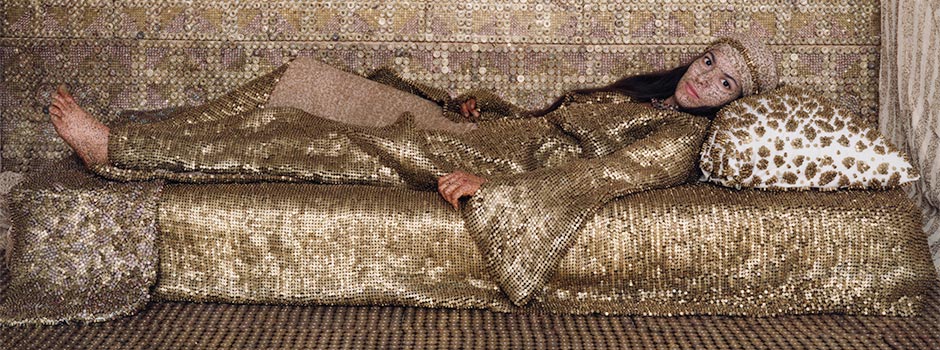
EXHIBITION AT KASHYA HILDEBRAND (APRIL 24 – JUNE 5, 2015) Lalla Essaydi: The Dangerous Frontier
Apr 23, 2015 Exhibition

 Lalla Essaydi / Bullets Revisited #27B, 2014, chromogenic print, 122x153 cm / Courtesy of Kashya Hildebrand Gallery
Lalla Essaydi / Bullets Revisited #27B, 2014, chromogenic print, 122x153 cm / Courtesy of Kashya Hildebrand Gallery
Essaydi’s photographs are the result of a complex performance-based medium comprising painting, calligraphy, interior design, costume design, stage directing, and finally photography. This meticulous process of image making is crucial to Essaydi’s oeuvre. The uncropped white borders of the film made visible emphasise that she fabricated her settings and identities, mocking the Orientalists’ invented fantasy scenes, yet hers are based on historical, social, and cultural facts.
Throughout her work, Essaydi uses henna painting to write intricate calligraphic text over every available surface – from the models themselves to their clothing and even the walls themselves. This henna painting comes to elaborately conceal the uncovered parts of the female bodies and in this sense assumes an allegorical dimension: even their bare skin becomes her canvas as she covers their ankles, legs, arms, wrists and faces in row upon row of tight script. "By reclaiming the rich tradition of calligraphy and interweaving it with the traditionally female art of henna," she explains, "I have been able to express, and yet, in another sense, dissolve the contradictions I have encountered in my culture: between hierarchy and fluidity, between public and private space, between the richness and the confining aspects of Islamic traditions."
In her 'Bullets' [and 'Bullets Revisited'] series, Essaydi takes her creativity to another level, not only through the assiduous labour involved in the production of these photographs but also through the powerful imagery she presents. The models and their surroundings are elegantly adorned with sparkling golden fabrics and metallic materials, giving an impression of shimmering luxury. Upon closer inception, it is the military juxtapositions of carefully cut and polished bullet casings that build up these glamorous trompe l’oeil images. Despite this apparent blinding beauty, where ammunition is even hand sewn on the models’ clothes, jewels, and beds, Essaydi uses the bullet as a disturbing metaphor for the hidden violence.
At the same time, Essaydi’s models are depicted as femmes fatales, equipped with threatening weapons with which they shield themselves against Western voyeurism and male domination. The coldness of the bullets’ brass conveys a feeling of uneasiness and rejects the warm colours and ambiance found in Orientalist paintings. Talking about Orientalism, Essaydi stated that "beauty is quite dangerous, as it lures the viewer into accepting the fantasy" yet she subverts the danger of beauty in her Bullets series by seducing the viewer in a much more perilous world, that of war and destruction raging through contemporary society with the Arab Spring.
- Includes text abstracted from Lalla Essaydi: Crossing Boundaries, Bridging Cultures (ACR Edition, 2015)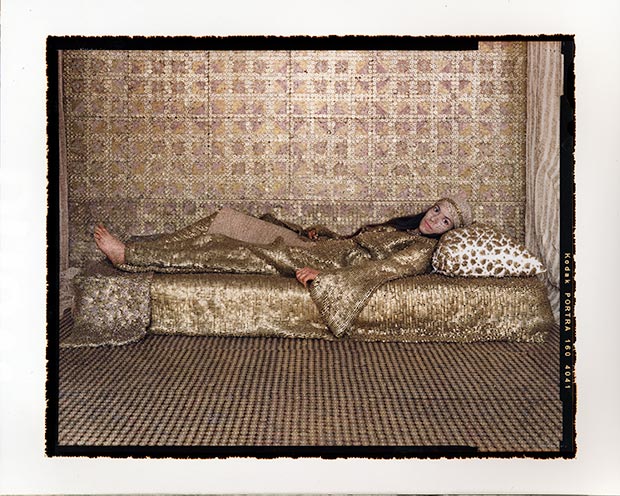 Lalla Essaydi / Bullets Revisited #29, 2014, chromogenic print, 121.9x152 cm / Courtesy of Kashya Hildebrand Gallery
Lalla Essaydi / Bullets Revisited #29, 2014, chromogenic print, 121.9x152 cm / Courtesy of Kashya Hildebrand Gallery
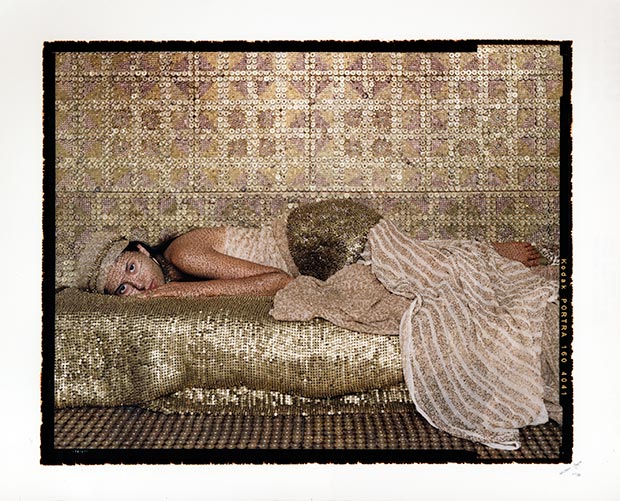 Lalla Essaydi / Bullets Revisited #30, 2014, chromogenic print, 121.9x152.4 cm / Courtesy of Kashya Hildebrand Gallery
Lalla Essaydi / Bullets Revisited #30, 2014, chromogenic print, 121.9x152.4 cm / Courtesy of Kashya Hildebrand Gallery
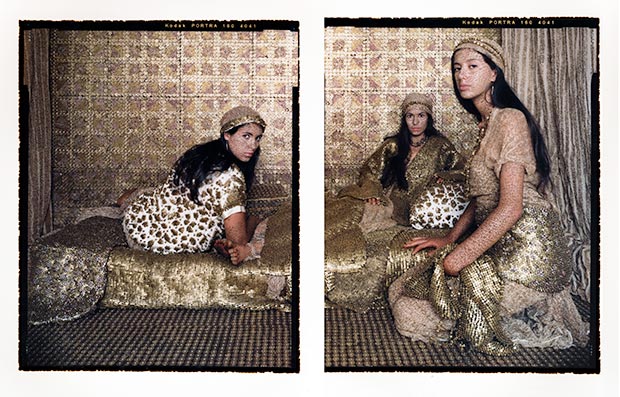 Lalla Essaydi / Bullets Revisited #33, 2014, chromogenic print, 101.6x76.2 cm each / Courtesy of Kashya Hildebrand Gallery
Lalla Essaydi / Bullets Revisited #33, 2014, chromogenic print, 101.6x76.2 cm each / Courtesy of Kashya Hildebrand Gallery
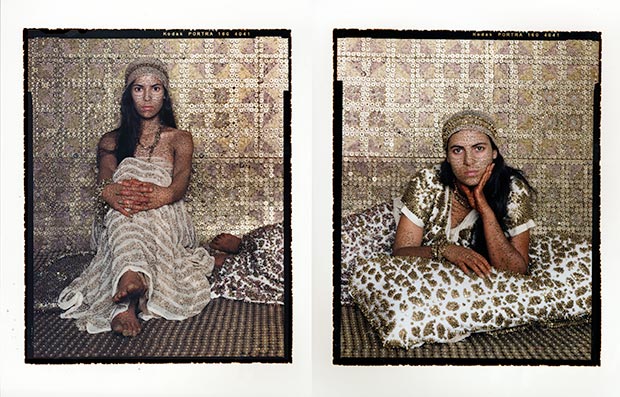 Lalla Essaydi / Bullets Revisited #34, 2014, chromogenic print, 101.6x76.2 cm each / Courtesy of Kashya Hildebrand Gallery
Lalla Essaydi / Bullets Revisited #34, 2014, chromogenic print, 101.6x76.2 cm each / Courtesy of Kashya Hildebrand Gallery
 Lalla Essaydi / Bullets Revisited #36, 2014, chromogenic print, 152.4x121.9 cm / Courtesy of Kashya Hildebrand Gallery
Lalla Essaydi / Bullets Revisited #36, 2014, chromogenic print, 152.4x121.9 cm / Courtesy of Kashya Hildebrand Gallery
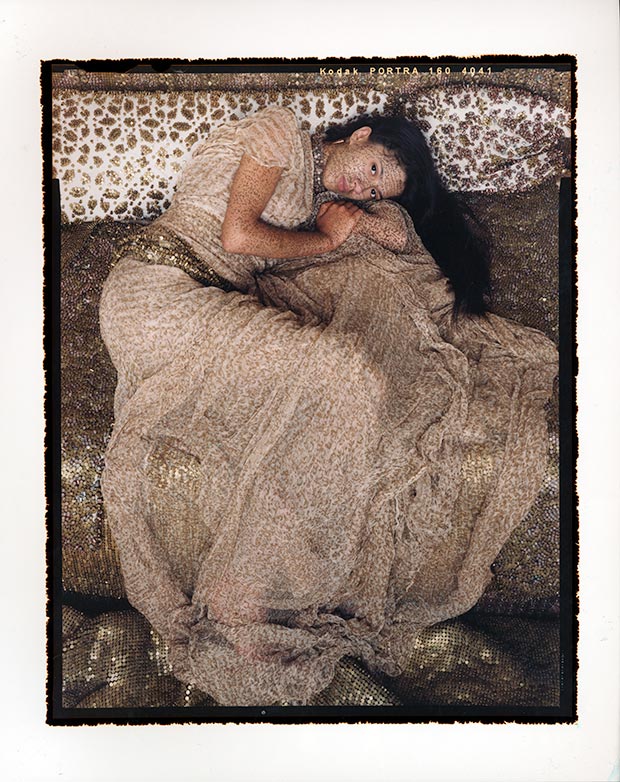 Lalla Essaydi / Bullets Revisited #37, 2014, chromogenic print, 152.4x121.9 cm / Courtesy of Kashya Hildebrand Gallery
Lalla Essaydi / Bullets Revisited #37, 2014, chromogenic print, 152.4x121.9 cm / Courtesy of Kashya Hildebrand Gallery
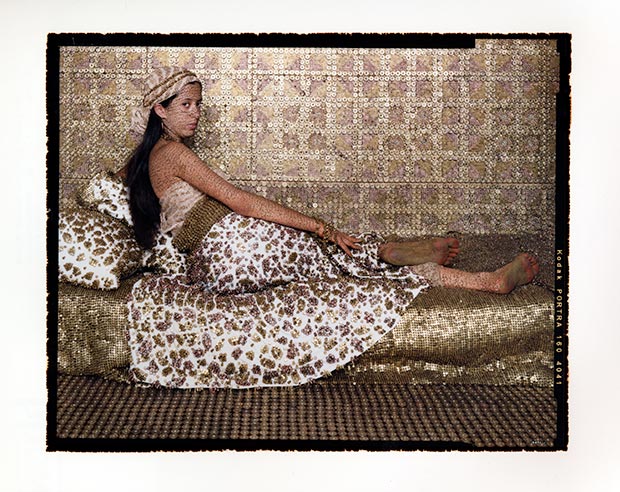 Lalla Essaydi / Bullets Revisited #38, 2014, chromogenic print, 121.9x152.4 cm / Courtesy of Kashya Hildebrand Gallery
Lalla Essaydi / Bullets Revisited #38, 2014, chromogenic print, 121.9x152.4 cm / Courtesy of Kashya Hildebrand Gallery
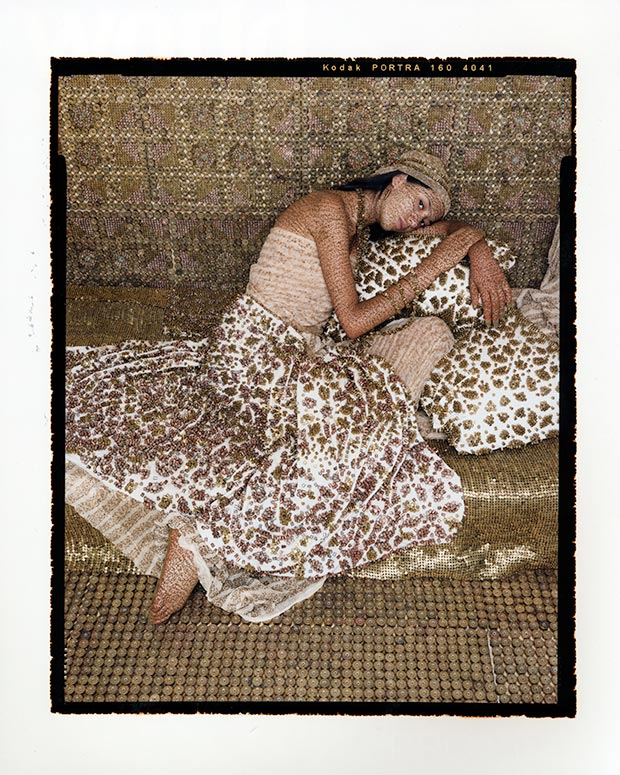 Lalla Essaydi / Bullets Revisited #41, 2014, chromogenic print, 152.4x121.9 cm / Courtesy of Kashya Hildebrand Gallery
Lalla Essaydi / Bullets Revisited #41, 2014, chromogenic print, 152.4x121.9 cm / Courtesy of Kashya Hildebrand Gallery
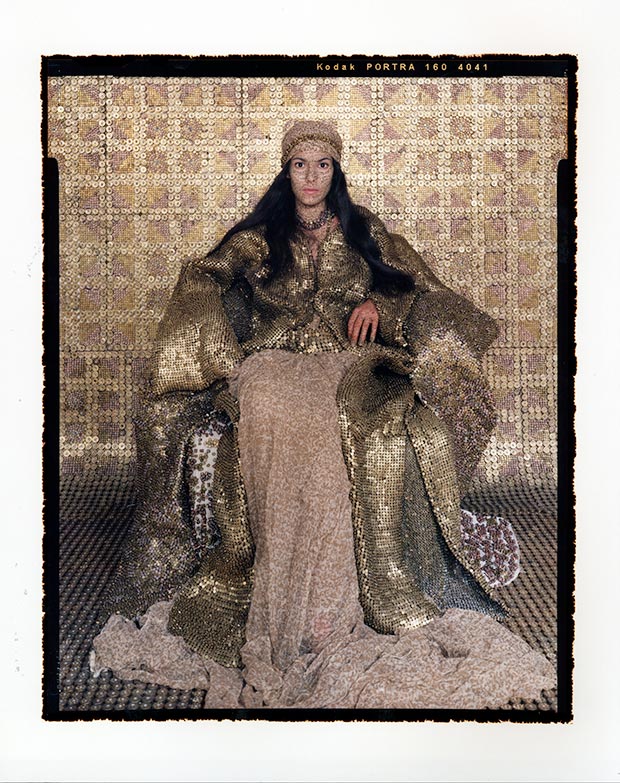 Lalla Essaydi / Bullets Revisited #44, 2014, chromogenic print, 152.4x121.9 cm / Courtesy of Kashya Hildebrand Gallery
Lalla Essaydi / Bullets Revisited #44, 2014, chromogenic print, 152.4x121.9 cm / Courtesy of Kashya Hildebrand Gallery
Lalla A. Essaydi (1956) grew up in Morocco and now lives in USA where she received her MFA from the School of the Museum of Fine Arts/TUFTS University in May 2003. Recent solo exhibitions include 'The Dangerous Frontier' at Kashya Hildebrand, London and 'Lalla Essaydi' at Edwynn Houk, Zurich, Switzerland (both 2015), 'Lalla Essaydi: Writing the Self, Writing Others' at Bahrain National Museum, Manama, Bahrain (2014) and 'Lalla Essaydi: Beyond Time and Beauty' at Museum of Modern Art, Baku, Azerbaijan (2013). Her work can be found in the collections of The British Museum, The Louvre, Los Angeles County Museum of Art, Mathaf: Arab Museum of Modern Art, Qatar and The Art Institute of Chicago. In 2015, ACR Edition released her monograph, 'Lalla Essaydi: Crossing Boundaries, Bridging Cultures'. Her art, which often combines Islamic calligraphy with representations of the female body, addresses the complex reality of Arab female identity from the unique perspective of personal experience.
Dr Venetia Porter is a curator at the British Museum responsible for the collection of Islamic art, in particular of the Arab World and Turkey as well as developing the collection of the modern and contemporary art of the Middle East. She was previously curator of Islamic coins in the Department of Coins and Medals. She gained a degree in Arabic and Persian at the University of Oxford, followed by a MPhil in Islamic Art, obtaining her PhD on 'The history and monuments of the Tahirid dynasty of the Yemen 858-923/1454-1517' from the University of Durham. She recently curated the exhibition Hajj: Journey to the heart of Islam (2012).
Director of The Orientalist Museum, Doha, Dr Olga Nefedova is an art historian specialising in the Orientalist art movement. She received her PhD from the Russian Academy of Arts in Moscow. She has worked for several years with private and government collections in the Middle East and the Gulf countries. Her recent projects include the exhibition A Journey into the World of the Ottomans by the Orientalist Museum.
Founded in 2001, the gallery's artists challenge pre-conceived notions of nationality and cultural identity, creating an environment in which established norms become blurred and characterisations from seemingly contrasting cultures occupy the same visual space. This juxtaposition leads to a simultaneous renunciation and acceptance of the traditional and the contemporary, creating an environment that is in constant flux. Religion, politics, nationality and culture are treated as the foundation of identity, depicted and disseminated to varying degrees. Through painting, collage, sculpture, photography and installation work the artists convey the contestations of the contemporary political landscape.
Comments
Add a comment